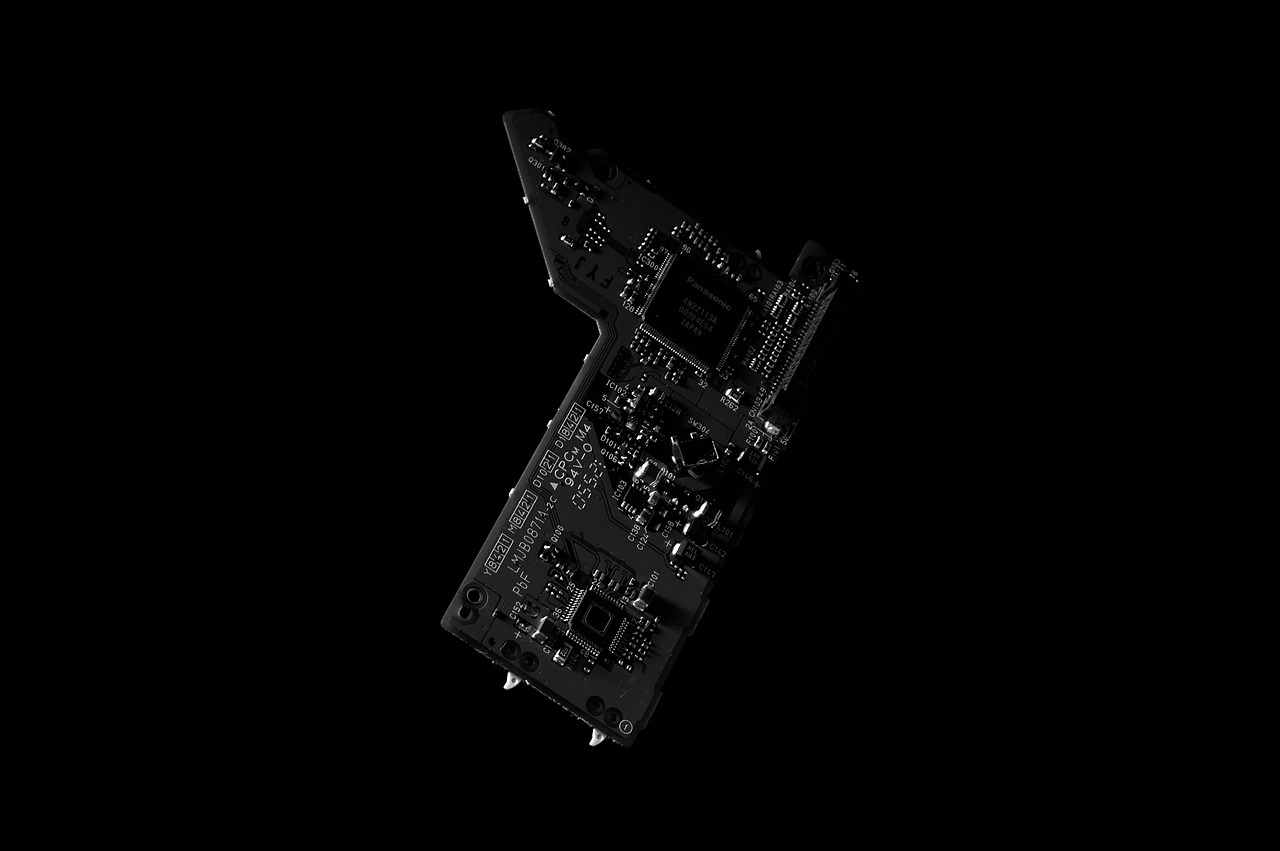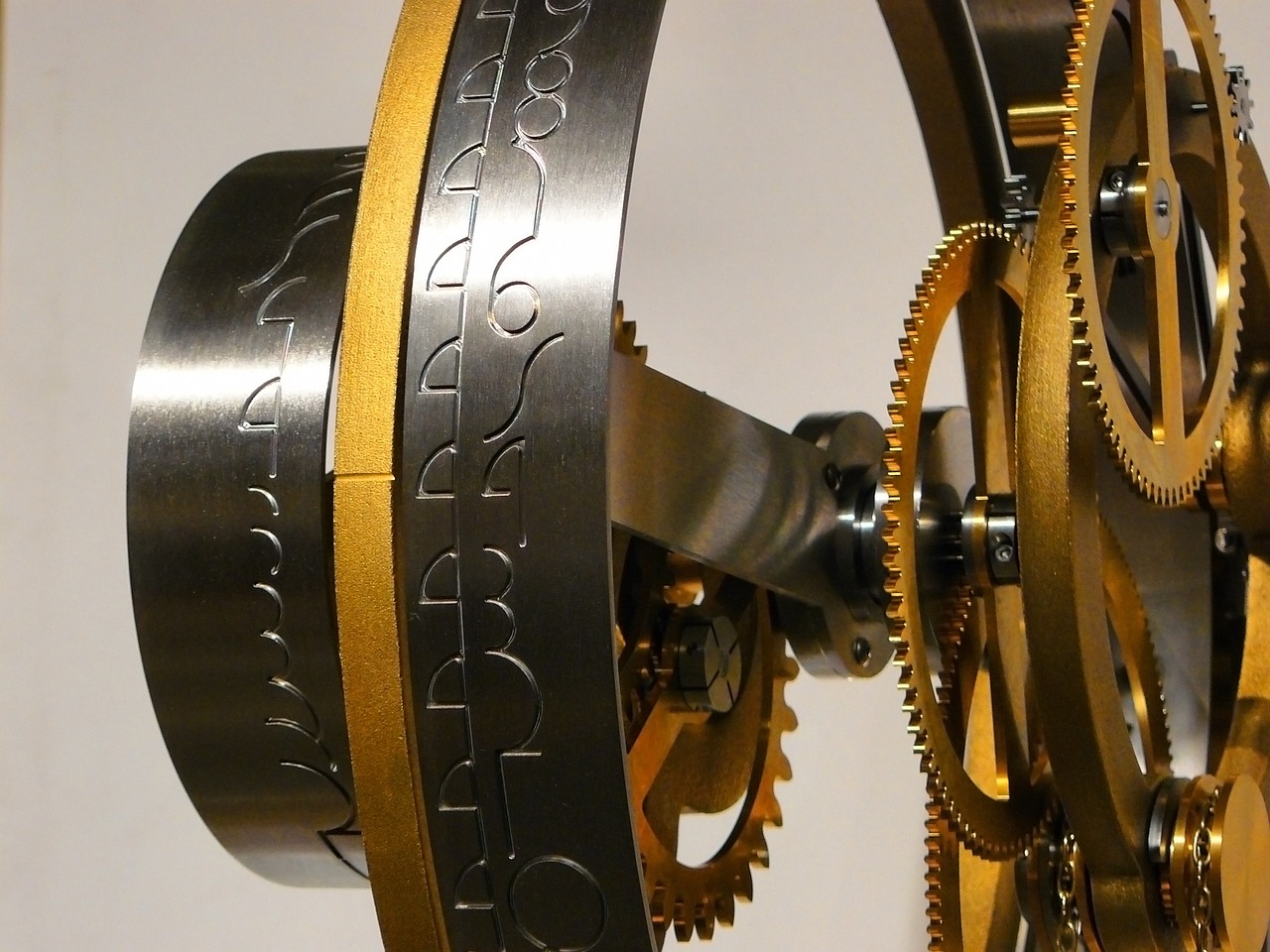How to Perform Technical Analysis on Altcoins
In the ever-evolving world of cryptocurrencies, understanding how to perform technical analysis on altcoins is crucial for traders looking to navigate this volatile market. Unlike Bitcoin, which often dominates headlines, altcoins offer a plethora of opportunities and challenges. They can be as unpredictable as a rollercoaster ride, making it essential to equip yourself with the right tools and techniques. This article will guide you through the essential strategies and tools to help you make informed decisions, ensuring you don't just ride the waves but also understand the currents beneath.
Altcoins, or alternative cryptocurrencies, are any digital currencies other than Bitcoin. They come in many shapes and sizes, each designed with unique features and functionalities. For instance, some altcoins focus on enhancing privacy, while others aim to improve transaction speeds or create decentralized applications. Understanding the significance of these coins in the crypto ecosystem is vital. They not only diversify investment portfolios but also provide alternatives that can outperform Bitcoin in certain market conditions. By incorporating altcoins into your trading strategy, you can potentially mitigate risks and capitalize on emerging trends.
Familiarity with technical analysis tools is crucial for any trader aiming to succeed in the altcoin market. These tools help analyze market trends and price movements, giving you an edge in your trading decisions. Some of the essential tools include:
- Moving Averages
- Relative Strength Index (RSI)
- Moving Average Convergence Divergence (MACD)
Each of these tools serves a specific purpose, and understanding how to use them effectively can be the difference between a profitable trade and a regrettable loss.
Moving averages are one of the most fundamental tools in technical analysis. They smooth out price data to help identify trends over specific periods. By averaging past prices, traders can determine the general direction of an altcoin's price movement. There are two main types of moving averages that you should be familiar with:
The Simple Moving Average (SMA) is a basic yet effective tool for traders. It calculates the average price of an altcoin over a specified number of periods. For example, a 10-day SMA averages the closing prices of the last ten days. Traders often use the SMA to identify potential buy and sell signals. If the price crosses above the SMA, it may indicate a buying opportunity, while a price crossing below could signal a sell.
The Exponential Moving Average (EMA), on the other hand, gives more weight to recent prices, making it more responsive to new information. This can provide more accurate trend signals, especially in a rapidly changing market like altcoins. Many traders prefer the EMA for short-term trading strategies because it reacts more quickly to price changes compared to the SMA.
The Relative Strength Index (RSI) is a momentum oscillator that measures the speed and change of price movements. It ranges from 0 to 100 and is typically used to identify overbought or oversold conditions in altcoins. An RSI above 70 often indicates that an altcoin is overbought, while an RSI below 30 suggests it is oversold. By interpreting these values, traders can make informed decisions about when to enter or exit positions.
Recognizing chart patterns is vital for predicting future price movements in altcoins. These patterns can tell you a lot about market sentiment and potential price directions. Common chart patterns include:
- Head and Shoulders
- Flags
- Triangles
Each of these patterns has its significance in altcoin trading, providing traders with insights into potential reversals or continuations in price trends.
Bullish and bearish patterns are essential for understanding market sentiment. A bullish pattern may indicate that prices are likely to rise, while a bearish pattern suggests a potential decline. By learning how to identify these patterns, traders can position themselves advantageously in the market.
Drawing trend lines and channels is another effective technique for visualizing price movements. These lines help traders determine support and resistance levels, which are crucial for making informed trading decisions. By understanding where prices are likely to bounce or break, you can better strategize your entry and exit points.
Q: What is the best time frame for performing technical analysis on altcoins?
A: The best time frame depends on your trading strategy. Day traders may prefer shorter time frames like 15 minutes or 1 hour, while long-term investors may look at daily or weekly charts.
Q: Can technical analysis predict the price of altcoins accurately?
A: While technical analysis can provide insights into potential price movements, it is not foolproof. Market conditions, news events, and overall sentiment can significantly impact prices.
Q: Should I use multiple technical analysis tools?
A: Yes! Using a combination of tools can provide a more comprehensive view of the market and help confirm signals, increasing your chances of making profitable trades.

Understanding Altcoins
Altcoins, or alternative cryptocurrencies, play a crucial role in the vast and ever-evolving world of digital currencies. While Bitcoin often steals the spotlight as the first and most recognized cryptocurrency, altcoins offer a diverse range of features and functionalities that cater to various needs within the crypto ecosystem. Think of altcoins as the vibrant colors in an artist's palette, each bringing its unique hue to the canvas of blockchain technology. They not only provide alternatives to Bitcoin but also introduce innovative solutions and applications that enhance the overall functionality of cryptocurrencies.
One of the primary reasons traders and investors explore altcoins is their potential for **diversification**. In the same way that a well-balanced diet includes a variety of foods to ensure optimal health, a diversified investment portfolio can mitigate risks and enhance returns in the volatile cryptocurrency market. By incorporating altcoins into their strategies, traders can tap into various market segments, each with its unique characteristics and growth potential. For instance, some altcoins focus on privacy, while others might prioritize smart contracts or decentralized finance (DeFi) applications.
Furthermore, the significance of altcoins extends beyond mere investment opportunities. They often drive innovation within the blockchain space, pushing the boundaries of what cryptocurrencies can achieve. For example, Ethereum introduced the concept of smart contracts, which has enabled a plethora of decentralized applications (dApps) to flourish. Similarly, coins like Chainlink provide essential infrastructure for connecting smart contracts with real-world data, showcasing how altcoins can solve specific problems that Bitcoin alone cannot.
However, navigating the altcoin landscape requires a keen understanding of the market dynamics at play. With thousands of altcoins available, each with different use cases, market capitalizations, and community support, it can be overwhelming for newcomers. To make informed decisions, traders should consider conducting thorough research on the fundamentals of each altcoin, including its whitepaper, development team, and community engagement. This foundational knowledge can help traders identify promising projects and avoid potential pitfalls.
In summary, altcoins are not just mere alternatives to Bitcoin; they are a vital part of the cryptocurrency ecosystem that offers unique opportunities for investment and innovation. By understanding the significance of altcoins and their diverse functionalities, traders can better position themselves in the market and make informed decisions that align with their investment goals.

Key Technical Analysis Tools
When it comes to navigating the turbulent waters of the cryptocurrency market, having the right tools at your disposal is akin to having a sturdy ship in a storm. Technical analysis is your compass, guiding you through the unpredictable price movements of altcoins. Understanding the key tools available can significantly enhance your trading strategy, allowing you to make informed decisions rather than relying on gut feelings. Let’s dive into some of the most essential tools that every altcoin trader should be familiar with.
First on our list is the Moving Average, a fundamental tool that smooths out price data to highlight trends over a specified period. Imagine trying to see a clear path through a dense fog—moving averages help clear the air, making it easier to identify where the market is headed. By averaging past prices, traders can gain insights into potential future movements. There are different types of moving averages, each serving its unique purpose in the trading strategy.
Moving averages come in various forms, but the two most popular types are the Simple Moving Average (SMA) and the Exponential Moving Average (EMA). Each type has its strengths, and understanding them can be the difference between a successful trade and a costly mistake.
The Simple Moving Average is calculated by taking the average of a set number of past prices. For example, a 10-day SMA takes the average of the closing prices from the last ten days. This tool provides a straightforward view of the price trend, allowing traders to identify potential buy and sell signals. However, it can be slow to react to sudden price changes, which is where the EMA comes into play.
The Exponential Moving Average gives more weight to recent prices, making it more responsive to price changes. This can be particularly useful in the fast-paced world of altcoins, where every second counts. By focusing on the latest data, the EMA can provide more accurate trend signals, helping traders to seize opportunities before they vanish. Many traders often use both SMA and EMA together to create a more comprehensive view of the market.
Next up is the Relative Strength Index (RSI), a powerful momentum oscillator that measures the speed and change of price movements. Think of the RSI as a weather vane, indicating whether the market is overbought or oversold. It operates on a scale of 0 to 100, with values above 70 indicating an overbought condition and values below 30 signaling an oversold condition. By interpreting these values, traders can make educated guesses about potential price reversals.
In summary, mastering these key technical analysis tools can significantly enhance your trading strategy. The combination of moving averages and the RSI provides a robust framework for understanding market dynamics. As you become more comfortable with these tools, you'll find that your ability to analyze altcoins improves, allowing you to navigate the market with greater confidence.
- What is the best moving average to use for altcoin trading? The best moving average depends on your trading strategy. Many traders prefer the EMA for its responsiveness to price changes, while others may find the SMA effective for longer-term trends.
- How do I know when to buy or sell based on RSI? Look for RSI values above 70 as an indication that an altcoin may be overbought, suggesting a potential sell opportunity. Conversely, an RSI below 30 may indicate an oversold condition, which could present a buying opportunity.
- Can I use these tools for all cryptocurrencies? Yes, these technical analysis tools are applicable to all cryptocurrencies, but their effectiveness can vary based on market conditions and the specific characteristics of each altcoin.

Moving Averages
When it comes to navigating the tumultuous waters of altcoin trading, serve as a reliable compass for traders. These statistical calculations help smooth out price data by creating a constantly updated average price, which allows traders to identify trends over a specified period. The beauty of moving averages lies in their simplicity and effectiveness; they strip away the noise of daily price fluctuations, allowing traders to focus on the bigger picture. But how do you harness their power effectively? Let's dive in!
There are primarily two types of moving averages that traders rely on: the Simple Moving Average (SMA) and the Exponential Moving Average (EMA). Each has its unique characteristics and applications in trading strategies, helping you make informed decisions about when to enter or exit a trade. Understanding these differences is crucial; think of it like choosing between a sturdy, reliable compass (SMA) and a high-tech GPS that adjusts to your current location (EMA). Both can guide you, but in different ways.
The Simple Moving Average (SMA) is calculated by adding the closing prices of an asset over a specific number of periods and then dividing that total by the number of periods. For example, if you're looking at a 10-day SMA, you would sum the closing prices of the last 10 days and divide by 10. This method provides an average that traders can use as a baseline to gauge whether the asset is trending upward or downward.
On the other hand, the Exponential Moving Average (EMA) places more weight on recent prices, making it more responsive to new information. This means that the EMA can often signal trends earlier than the SMA, which is especially useful in the fast-paced world of altcoins. For instance, if the price of an altcoin is experiencing rapid changes, the EMA will adjust more quickly, allowing traders to make timely decisions. The formula for EMA is a bit more complex, but it essentially involves applying a multiplier to the most recent price, ensuring that the latest data has a greater impact on the average.
Both moving averages can be used in conjunction with each other to create a trading strategy. For example, when the EMA crosses above the SMA, it can indicate a potential buy signal, suggesting that the altcoin is gaining momentum. Conversely, when the EMA crosses below the SMA, it could signal a sell signal, indicating that the altcoin may be losing strength. This crossover strategy is popular among traders and can be a powerful tool in your trading arsenal.
In summary, moving averages are indispensable tools for anyone looking to perform technical analysis on altcoins. By understanding the differences between SMA and EMA, and how to effectively use them, you can gain valuable insights into market trends and make more informed trading decisions. So, whether you’re a seasoned trader or just dipping your toes into the world of altcoins, integrating moving averages into your strategy can help you navigate the unpredictable waters of cryptocurrency trading with confidence.
- What is the primary purpose of moving averages in trading? Moving averages help traders identify trends and potential reversal points in the price of an asset.
- How do I choose between SMA and EMA? If you prefer a more stable view of price trends, SMA may be better for you. If you want to react quickly to price changes, go for EMA.
- Can moving averages be used in other markets? Absolutely! Moving averages are widely used across various markets, including stocks, commodities, and forex.

Simple Moving Average (SMA)
The is one of the most fundamental tools in the arsenal of a cryptocurrency trader. Essentially, it is a statistical calculation that takes the average of a selected range of prices over a specific number of periods. For instance, a 10-day SMA calculates the average closing price of an altcoin over the last ten days. This method helps traders smooth out price fluctuations and identify the underlying trend more clearly.
One of the key advantages of using the SMA is its simplicity. It provides a clear visual representation of the price movement, allowing traders to make more informed decisions. When the current price is above the SMA, it typically indicates a bullish trend, suggesting that it might be a good time to buy. Conversely, if the price falls below the SMA, it could signal a bearish trend, potentially indicating a selling opportunity.
To calculate the SMA, you can use the following formula:
SMA (P1 + P2 + P3 + ... + Pn) / n
Where:
- P1, P2, P3,..., Pn Prices over the selected period
- n Number of periods
For example, if you want to calculate the 5-day SMA for an altcoin with the following closing prices over the last five days: $10, $12, $11, $13, $15, you would add these prices together and divide by 5:
SMA ($10 + $12 + $11 + $13 + $15) / 5 $61 / 5 $12.2
In practice, traders often use the SMA in conjunction with other indicators to confirm trends. For instance, if the price crosses above the SMA while the Relative Strength Index (RSI) is also showing bullish momentum, this could reinforce the decision to enter a trade. However, it's crucial to remember that while the SMA is a powerful tool, it is not infallible. It lags behind price movements since it is based on past data, which means that traders should use it alongside other tools and indicators for a more comprehensive analysis.
In summary, the Simple Moving Average is a vital tool for altcoin traders, providing clarity and direction in the often chaotic world of cryptocurrency trading. By understanding how to calculate and interpret the SMA, traders can better navigate the market and enhance their trading strategies.

Exponential Moving Average (EMA)
The is a powerful tool that many traders swear by when analyzing altcoins. Unlike the Simple Moving Average (SMA), which treats all price data equally, the EMA gives more weight to the most recent prices. This means that it reacts more quickly to price changes, making it particularly valuable in the fast-paced world of cryptocurrency trading. Imagine you're trying to catch a wave while surfing; the EMA helps you stay on top of the wave of price action, allowing you to make more informed decisions.
To calculate the EMA, you need to follow a specific formula that involves the previous EMA value and the current price. The formula is as follows:
EMA (Current Price x K) + (Previous EMA x (1 - K)) K 2 / (N + 1)
In this formula, N is the number of periods you want to consider. For example, a 10-day EMA would use 10 as the value for N. The K value, known as the smoothing constant, adjusts how much weight is applied to recent prices. The smaller the period, the more sensitive the EMA will be to price changes.
So, why should you consider using the EMA in your altcoin trading strategy? Here are a few compelling reasons:
- Timeliness: Because it reacts more quickly to price changes, the EMA can help you spot trends sooner than other moving averages.
- Trend Confirmation: When the price crosses above the EMA, it may signal a bullish trend, while crossing below can indicate a bearish trend.
- Support and Resistance Levels: The EMA can also act as a dynamic support or resistance level, helping you make more strategic trading decisions.
However, it’s important to remember that no indicator is foolproof. The EMA can sometimes lead to false signals, especially in a volatile market like cryptocurrencies. Therefore, it’s often wise to use the EMA in conjunction with other indicators, such as the Relative Strength Index (RSI), to confirm your trading decisions.
In conclusion, the Exponential Moving Average is a valuable tool for anyone looking to navigate the choppy waters of altcoin trading. By understanding how to calculate and interpret the EMA, you can better position yourself to seize opportunities and minimize risks in the ever-evolving cryptocurrency market.
- What is the main difference between EMA and SMA?
The main difference is that EMA gives more weight to recent prices, making it more responsive to price changes compared to SMA. - How do I choose the right period for EMA?
Choosing the right period depends on your trading strategy. Shorter periods (like 10 or 20 days) provide quicker signals, while longer periods (like 50 or 100 days) offer a smoother trend analysis. - Can I use EMA for day trading?
Yes, many day traders use EMA to make quick decisions based on short-term price movements.

Relative Strength Index (RSI)
The is a powerful tool in the arsenal of any altcoin trader. It’s a momentum oscillator that measures the speed and change of price movements, providing a clear picture of whether an altcoin is overbought or oversold. Imagine it as a compass guiding you through the turbulent seas of the cryptocurrency market. When the RSI is above 70, it typically indicates that an asset is overbought, while an RSI below 30 suggests it might be oversold. This information can be crucial for making timely trading decisions.
To interpret the RSI effectively, traders often look for divergences between the RSI and the price of the altcoin. For instance, if the price is making new highs while the RSI is failing to reach new highs, it may signal a potential reversal. Conversely, if the price is making new lows but the RSI is not, it could indicate a bullish reversal is on the horizon. This is where the true power of RSI lies: it not only helps in identifying potential entry and exit points but also assists in confirming trends.
Here's a quick breakdown of how to calculate the RSI:
| Step | Description |
|---|---|
| 1 | Calculate the average gain and average loss over a specified period (typically 14 days). |
| 2 | Calculate the Relative Strength (RS) by dividing the average gain by the average loss. |
| 3 | Calculate the RSI using the formula: RSI 100 - (100 / (1 + RS)). |
Understanding the RSI is not just about numbers; it’s about reading the market’s pulse. Traders often use the RSI in conjunction with other technical indicators to confirm signals. For example, pairing the RSI with moving averages can create a robust trading strategy. If both indicators suggest a potential reversal, the confidence in that signal increases significantly.
In summary, the RSI is a vital tool for anyone looking to navigate the altcoin market. By providing insights into market momentum and potential reversal points, it empowers traders to make informed decisions. Remember, however, that no single indicator should be used in isolation. The key to successful trading lies in combining various tools and strategies to create a comprehensive trading plan.
- What is the best RSI setting for altcoins? While the default setting is 14 periods, some traders prefer shorter or longer periods depending on their trading style.
- Can RSI be used for long-term trading? Yes, RSI can be applied to longer time frames, but it's essential to consider the overall market context.
- What are the limitations of using RSI? RSI can sometimes give false signals, especially in strongly trending markets, so it’s crucial to use it alongside other indicators.

Chart Patterns and Trends
When it comes to trading altcoins, recognizing chart patterns and understanding market trends can be the difference between making a profit or incurring losses. Chart patterns serve as visual representations of price movements and can often indicate future behavior. Think of them as the fingerprints of the market; each pattern tells a story about what might happen next. By learning to read these patterns, traders can gain valuable insights into market sentiment and potential price movements.
There are several common chart patterns that traders often encounter, and understanding these can enhance your trading strategy significantly. Some of the most notable patterns include:
- Head and Shoulders: This pattern typically signals a reversal in trend. When you see this formation, it’s as if the market is saying, “I’m tired of going up!”
- Flags and Pennants: These patterns indicate a brief consolidation before the previous trend resumes. They act like a pause button, allowing traders to catch their breath before the action continues.
- Triangles: Triangles can be ascending, descending, or symmetrical, and they often signify a period of consolidation before a breakout. They are like a coiled spring, ready to release energy!
Identifying these patterns is crucial for predicting future movements. For instance, a head and shoulders pattern typically suggests a bearish reversal, while a double bottom can indicate a bullish trend reversal. Understanding these signals can help you make informed decisions about when to enter or exit a trade.
In addition to recognizing patterns, understanding trend lines and channels is essential for visualizing price movements. Trend lines are simple yet powerful tools that connect significant price points on the chart. They help traders identify potential support and resistance levels. A rising trend line indicates that prices are generally increasing, while a falling trend line suggests the opposite. By drawing these lines, you can create a clearer picture of the market’s direction.
Furthermore, channels can be drawn by creating two parallel trend lines that encapsulate price movements. This forms a channel where price action oscillates between the upper resistance line and the lower support line. Trading within these channels can be a great strategy, as it allows traders to buy near support and sell near resistance. It’s like surfing the waves—catch the right wave (or trend) and ride it for profit!
To summarize, mastering chart patterns and trends is an essential skill for any altcoin trader. By understanding these visual cues, you can better navigate the often volatile waters of cryptocurrency trading. Remember, the market is always telling a story; it’s up to you to learn how to read it!
1. What is the importance of chart patterns in altcoin trading?
Chart patterns help traders identify potential price movements and market sentiment, allowing for more informed trading decisions.
2. How can I effectively draw trend lines?
To draw trend lines, connect at least two significant price points on the chart. Ensure the line touches as many points as possible to improve its reliability.
3. Are all chart patterns reliable?
While chart patterns can provide valuable insights, they are not foolproof. Always consider other factors and indicators before making trading decisions.
4. How do I know when a breakout occurs?
A breakout occurs when the price moves outside of a defined support or resistance level with increased volume. Look for confirmation through other indicators as well.

Identifying Bullish and Bearish Patterns
When diving into the world of altcoins, one of the most exciting yet challenging aspects is recognizing bullish and bearish patterns. These patterns are like the heartbeat of the market, giving traders insights into potential price movements and market sentiment. But what exactly are these patterns, and how can you spot them? Let's break it down!
Bullish patterns indicate a potential price increase, while bearish patterns suggest a possible decline. Imagine you're a detective, analyzing clues left behind by price movements. Each pattern tells a story, and understanding these narratives can help you make informed trading decisions. For instance, a head and shoulders pattern can signal a reversal from bullish to bearish, while a double bottom might hint at an upcoming bullish trend. Recognizing these patterns is crucial, as they often precede significant price shifts.
To effectively identify these patterns, traders often rely on a combination of visual analysis and technical indicators. Here are some common bullish and bearish patterns you should keep an eye out for:
- Head and Shoulders: This pattern typically signals a reversal from a bullish trend to a bearish one. It consists of three peaks: a higher peak (head) between two lower peaks (shoulders).
- Double Bottom: This is a bullish reversal pattern that appears after a downtrend, resembling the letter "W." It signifies that the price has found support and is likely to rise.
- Flags and Pennants: These are continuation patterns that suggest the price will keep moving in the same direction after a brief consolidation. Flags are rectangular, while pennants are triangular.
- Rounding Bottom: A long-term bullish reversal pattern that looks like a bowl. It indicates a gradual shift from bearish to bullish sentiment.
Understanding the psychology behind these patterns is just as important as recognizing them. Traders often react to price movements based on emotions like fear and greed. For example, when many traders see a double bottom forming, they may rush to buy, driving the price up. Conversely, if they spot a head and shoulders pattern, they might panic and sell, pushing the price down. This collective behavior creates self-fulfilling prophecies, making it essential to stay ahead of the crowd.
Moreover, combining pattern recognition with other technical analysis tools can enhance your trading strategy. For instance, using moving averages alongside pattern analysis can provide additional confirmation of potential trends. If a bullish pattern forms and the price crosses above a moving average, it may strengthen your conviction to enter a trade.
In conclusion, identifying bullish and bearish patterns is a skill that can significantly impact your trading success in the altcoin market. By honing your ability to read these patterns and understanding the psychology behind them, you can make more informed decisions and navigate the volatile waters of cryptocurrency trading with confidence.
Q1: How can I practice identifying bullish and bearish patterns?
A1: One effective way to practice is by using historical price charts. Look for patterns that have formed in the past and see how they played out. Additionally, many trading platforms offer demo accounts where you can practice without risking real money.
Q2: Are there any specific indicators that work well with pattern recognition?
A2: Yes! Indicators like the Relative Strength Index (RSI) and Moving Averages can complement your pattern analysis. For instance, if you identify a bullish pattern and the RSI indicates oversold conditions, it may signal a stronger buying opportunity.
Q3: Can bullish and bearish patterns fail?
A3: Absolutely! No pattern is foolproof, and market conditions can change rapidly. It's crucial to manage your risk and use stop-loss orders to protect your investments.

Trend Lines and Channels
When diving into the world of altcoin trading, understanding trend lines and channels is like having a compass in a dense forest. These tools help you navigate the chaotic landscape of cryptocurrency prices, allowing you to make informed decisions about when to buy or sell. So, what exactly are trend lines and channels, and how can they enhance your trading strategy?
Trend lines are straight lines drawn on a chart that connect significant price points, helping to illustrate the general direction of the market. They can be categorized into two main types: uptrend lines and downtrend lines. An uptrend line is formed by connecting the low points of a price series, indicating that prices are generally moving higher. Conversely, a downtrend line connects the high points, showing a general decline in prices. The key to using trend lines effectively is to ensure that they are drawn at least on two price points to confirm their validity.
Channels, on the other hand, are created by drawing two parallel trend lines—one for the highs and one for the lows—enclosing the price movements within a specific range. Think of channels as the boundaries of a racetrack; they define the space where the price is likely to move. Traders often use channels to identify potential breakout points, where the price could either soar above the upper channel line or plunge below the lower line. This helps in setting entry and exit points for trades.
To visualize this concept, consider the following table that outlines the characteristics of trend lines and channels:
| Feature | Trend Lines | Channels |
|---|---|---|
| Definition | Lines that connect significant price points | Two parallel lines defining price movement range |
| Types | Uptrend and Downtrend | Ascending and Descending Channels |
| Purpose | Identify market direction | Highlight potential breakout points |
| Usage | Support and resistance levels | Trade entry and exit points |
Now, let’s talk about how to draw these trend lines and channels accurately. Start by identifying the most recent swing highs and lows on your chart. For an uptrend line, connect at least two or more low points, ensuring the line slopes upward. For a downtrend line, connect high points with a downward slope. Once you have established your trend lines, you can draw parallel lines to create channels, which will help you visualize the price’s trajectory more clearly.
One common mistake traders make is ignoring the significance of these lines. They often treat them as mere guidelines rather than crucial indicators of market behavior. However, if you pay close attention to how the price interacts with these lines, you can gain valuable insights into market sentiment. For instance, if the price consistently bounces off a trend line, it indicates strong support or resistance, which can be pivotal for your trading strategy.
In conclusion, mastering trend lines and channels is essential for anyone looking to navigate the altcoin trading landscape. They not only provide clarity in a chaotic market but also empower you to make decisions based on solid technical analysis. So, the next time you pull up your trading chart, don’t forget to draw those lines; they might just lead you to your next profitable trade!
- What is the difference between a trend line and a channel?
A trend line is a single line connecting price points to indicate the market direction, while a channel consists of two parallel lines that define a price range. - How can I determine if a trend line is valid?
A trend line is considered valid if it connects at least two significant price points and has been tested multiple times by the market. - Can trend lines and channels be used in all trading strategies?
Yes, they can be integrated into various trading strategies, including day trading, swing trading, and long-term investing.
Frequently Asked Questions
- What are altcoins?
Altcoins, short for alternative coins, are any cryptocurrencies that are not Bitcoin. They serve various purposes and offer unique features that differentiate them from Bitcoin, such as smart contracts, privacy, and faster transaction times. Many traders explore altcoins to diversify their investment portfolios and capitalize on potential market opportunities.
- How do I perform technical analysis on altcoins?
Performing technical analysis on altcoins involves using various tools and techniques to analyze price movements and market trends. Key tools include moving averages, the Relative Strength Index (RSI), and chart patterns. By studying these indicators, traders can make informed decisions about buying and selling altcoins based on historical price data and market sentiment.
- What is the difference between Simple Moving Average (SMA) and Exponential Moving Average (EMA)?
The Simple Moving Average (SMA) calculates the average price over a specific period, treating all prices equally. In contrast, the Exponential Moving Average (EMA) gives more weight to recent prices, making it more responsive to new information. Traders often prefer the EMA for its ability to signal trends more quickly, making it a valuable tool in altcoin trading.
- How can I use the Relative Strength Index (RSI) in altcoin trading?
The RSI is a momentum oscillator that ranges from 0 to 100, helping traders identify overbought or oversold conditions in altcoins. Generally, an RSI above 70 indicates that an altcoin may be overbought, while an RSI below 30 suggests it may be oversold. By monitoring these levels, traders can make strategic decisions about entering or exiting positions.
- What are some common chart patterns I should look for?
Common chart patterns include head and shoulders, flags, and triangles. Each pattern can indicate potential price movements. For example, a head and shoulders pattern may signal a trend reversal, while a flag pattern often suggests a continuation of the current trend. Recognizing these patterns can provide valuable insights into market sentiment and potential trading opportunities.
- How do trend lines and channels help in altcoin trading?
Trend lines and channels are essential tools for visualizing price movements and identifying support and resistance levels. By drawing trend lines, traders can see the overall direction of the market and make decisions based on how the price interacts with these lines. Channels, which are formed by parallel trend lines, help to illustrate potential price ranges and breakout points.



















